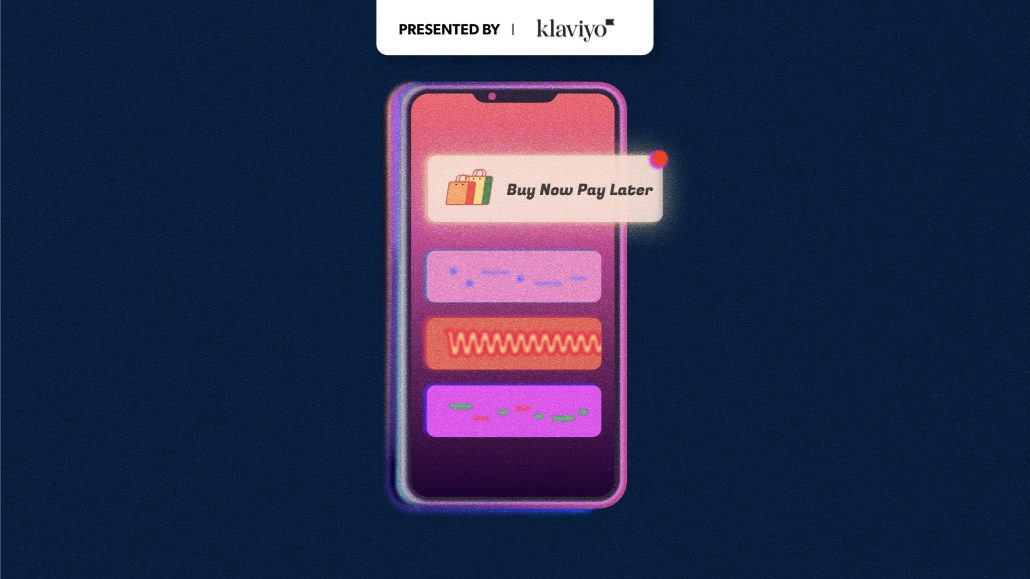BNPL platforms are booming this holiday season

November is shaping up to be the biggest ever for burgeoning buy now, pay later programs, driven in part by record-breaking Cyber 5 spending.
Adobe reports that $8.3 billion in holiday spending came via BNPL platforms through Nov. 27. That’s a 17% jump year over year, and amounts to about 7.5% of the total seasonal revenue. Additionally, about $940 million in BNPL spending happened on Cyber Monday alone, an all-time high and a staggering 42.5% increase from last year. Firms also reported various growth metrics, like:
- Klarna saw 29.5% more orders on Black Friday YoY
- Afterpay’s app usage was up 16% YoY
- Zip’s Cyber Monday sales were up 21% YoY
Stock prices also responded to the boom, with Affirm stock seeing a 101% bump over the past month to $34.46. Block, which owns Afterpay, went up 65% over the past month.
The growth is fueled by a mix of factors – from repeat users becoming comfortable with the service to more widespread use among retailers in sectors like electronics and travel. But from a consumer perspective, the broader credit crunch facing U.S. shoppers may be driving some to BNPL as a way to finance large holiday purchases. Total credit card balances have topped a record $1 trillion this year, with the average shopper carrying around $6,000 in debt. And the Consumer Financial Protection Bureau has identified that BNPL users are more likely to have credit debt.
Pat Suh, senior vice president of revenue at Affirm, said the company’s research showed that about 64% of consumers were looking for 0% interest plans for holiday spending. “People are tired of paying those kinds of rates, and they want to go to something very clear,” she said.
And while a large portion of overall purchases is still single big-ticket items like fitness equipment, travel, or mattresses, this year’s Cyber 5 saw more BNPL shoppers using it for more diversified carts. Affirm users this year spent the most at big retailers like Amazon and Walmart, Suh said. Overall, the average Affirm user spent about $300 on general merchandise, with about half on apparel.
“The American consumer still wants to spend,” she said. “They see (BNPL) as an everyday tool that they can use.”
Ted Rossman, senior industry analyst at Bankrate, said the Cyber5 usage this year amounts to “explosive” growth for services that several years ago were just starting to be embraced by U.S. shoppers. As people tire of racking up credit card debt, BNPL deals with zero or low interest can seem like “a kinder, gentler alternative,” he said.
But Rossman said shoppers must be mindful that the BNPL loans are still debts that must be paid, even if their balances don’t always appear on credit reports. And there are conflicting signals as to whether BNPL allows a customer to responsibly budget a large purchase or simply buying something that they currently cannot afford.
“It’s like a credit card that you can use to your advantage and get rewards, or you could pay 20% interest,” he said. “But for BNPL, the pitfalls are overspending and getting you over your head.”
Platforms say they hedge against this potential through safeguards in their approval systems. Affirm’s delinquency rates have hovered between 2% and 2.5% in recent quarters, defined as when a loan is more than four days past due.
Suh said that Affirm is able to control what people can borrow by undergoing an underwriting process for each individual purchase. The retailer can decide what kind of plans it wants to offer to customers, Shah whether that’s a pay-in-four 0% plan or a longer-term 48-month plan that includes fixed APRs.
“It’s not all or nothing,” Suh said. “What we try to do is optimize and balance the needs. The retailers want to go with the lowest cost, so we look at how we can optimize that without penalizing the consumer.”
Zip CMO Jinal Shah said the service cuts people off from getting future loans after they miss a single payment. It also offers the option for people to change a payment date if needed. So far, the spending boom hasn’t resulted in any “signals that give us room to be concerned about consumer behavior and spending,” Shah said. But such information will be better learned in the first quarter when the holiday shoppers’ payments come due.
Ultimately, Shah said that this holiday season is helping to mainstream BNPL at a time when customers are looking to spend. Customers didn’t necessarily spend more per transaction this year — average order volumes for Zip transactions were up 2% — but the overall amount of sales was up 24% year over year. Shah anticipates the growth will continue through December and into January with “new year, new you” spending.
“We do expect to see continued activity from customers that come to us from the holiday for the rest of the year,” she said.
